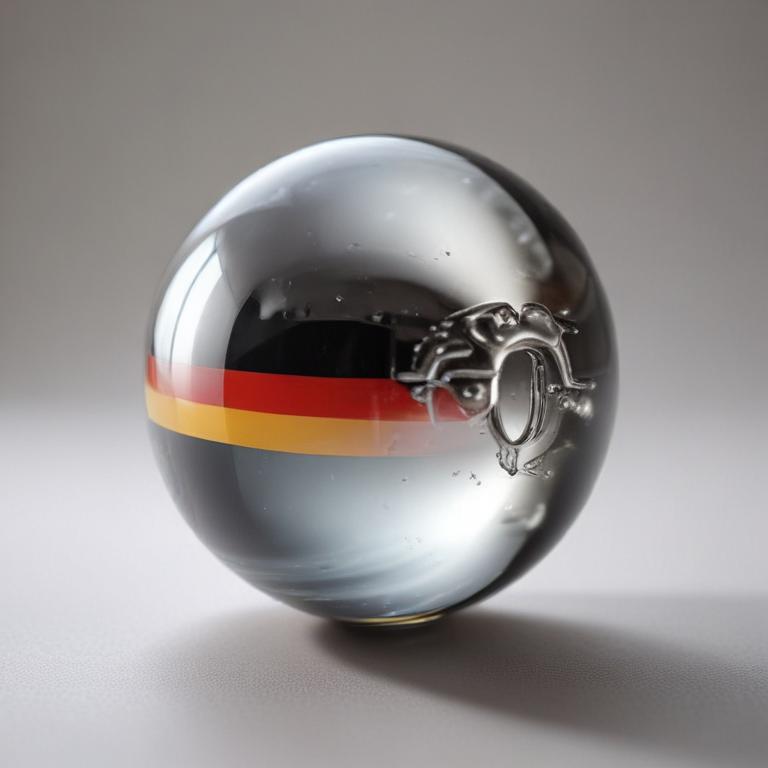发音 (Pronunciation):
IPA: /ˈdʒɜːrmən/
中文近似: '杰尔曼'
中文意思与词性 (Meanings & Part of Speech):
- 德国的 (adj.)
- 德语的 (n.)
例句 (Examples):
1. He is a German citizen.
(他是德国公民。)
2. I am learning the German language.
(我在学习德语。)
用法提示 (Usage Tip):
注意区分 'German' 和 'germ',前者指代国家或语言,后者指细菌或病菌。
更多关于 "german" (More about "german")
单词来源 (Etymology)
该词源于拉丁语 'Germanus',意为“兄弟”或“同类”。
词根词缀解析 (Root & Affix Analysis)
词根词缀解析待补充。
“german”的字母与词根个性化解读
字母象形/引申义 (个性化参考)
- 字母 'g' 的象形或引申含义可能包括: C的分化 (动, 头, 重要, 包围); 生长孕育 (土地); 走; 音变: G=K=C=H=J=Y。
- 字母 'e' 的象形或引申含义可能包括: 眼睛 (窗户符号引申); 向外 (ex-变体); 元音互换: A=E=I=O=U=W=Y。
- 字母 'r' 的象形或引申含义可能包括: 直立, 向上 (字母R形); 走, 跑 (R象形人); 弯曲 (舌头卷曲); 音变: R=L=M=N。
- 字母 'm' 的象形或引申含义可能包括: 山 (象形) -> 高大, 连接; 手 (男人劳动); 命令; 凸起 (嘴); 思维; 水面波纹; 音变: M=N=L=R; M=B=P=F=V。
- 字母 'a' 的象形或引申含义可能包括: 牛角 (象形: 牛头, 力量, 能力); 下面宽上面尖 (形状) -> 延伸, 远处, 高处, 方向, 指示。
- 字母 'n' 的象形或引申含义可能包括: 水 (M=N); 鼻音 (nose); 突出/生长/新生; 门 -> 否定 (no, not); 连接; 音变: N=M=L=R。
词根/组合解读 (个性化参考)
- 单词中的片段 'man' (源自词根/组合 'man') — 含义: 手; 持久; (来源提示: M(山)=男人劳动=手; M(山)=不动如山=持久).
学习提示:以上针对单词 german 的字母和词根解读,主要基于提供的特定象形及词根资料。这些提示旨在启发联想,而非绝对定论。更通用的记忆规则和原则请参考首页。英语词源复杂多变,实际应用中请结合更全面的词源词典和语言学知识进行深入学习。
常用词组 (Common Phrases)
- German culture: 德国文化
- German language: 德语
其他语言 (Other Languages)
- 德语: deutsch
- 法语: allemand
字母整体创意联想
单词 'german' 形状像一座桥,连接着不同文化和语言。
逐字母创意解读
中文谐音助记
‘德国人’ -> ‘格尔曼’ -> ‘跟我一起学习德语’
相关电影/名言
"I love German beer."
(我爱德国啤酒。)
- 《啤酒之路》(2010)
趣味知识/故事
德国被认为是现代哲学、音乐和科学的发源地,许多著名的思想家和艺术家都来自德国。
拓展信息
‘German’ 这个词在不同的语境下有不同的用法。
在地理上,它指代德国及其文化;在语言上,它指的是德国语言。
同时,‘German’ 也常用于描述与德国相关的事物,如德国的食品、节日等。
网络参考 (More about "german" from the Web)
German language - Wikipedia
German (Deutsch, pronounced ⓘ) [9] is a West Germanic language in the Indo-European language family, mainly spoken in Western and Central Europe.It is the majority and official (or co-official) language in Germany, Austria, Switzerland, and Liechtenstein.It is also an official language of Luxembourg, Belgium and the Italian autonomous province of South Tyrol, as well as a recognized national ...
Germany - Wikipedia
Germany, [d] officially the Federal Republic of Germany, [e] is a country in Central Europe.It lies between the Baltic Sea and the North Sea to the north and the Alps to the south. Its sixteen constituent states have a total population of over 84 million in an area of 357,596 km 2 (138,069 sq mi), making it the most populous member state of the European Union.
German language | Origin, History, Characteristics, & Facts | Britannica
German language, official language of both Germany and Austria and one of the official languages of Switzerland. German belongs to the West Germanic group of the Indo-European language family, along with English, Frisian, and Dutch (Netherlandic, Flemish). Learn more about the German language.
更多图片 (german More Images)

